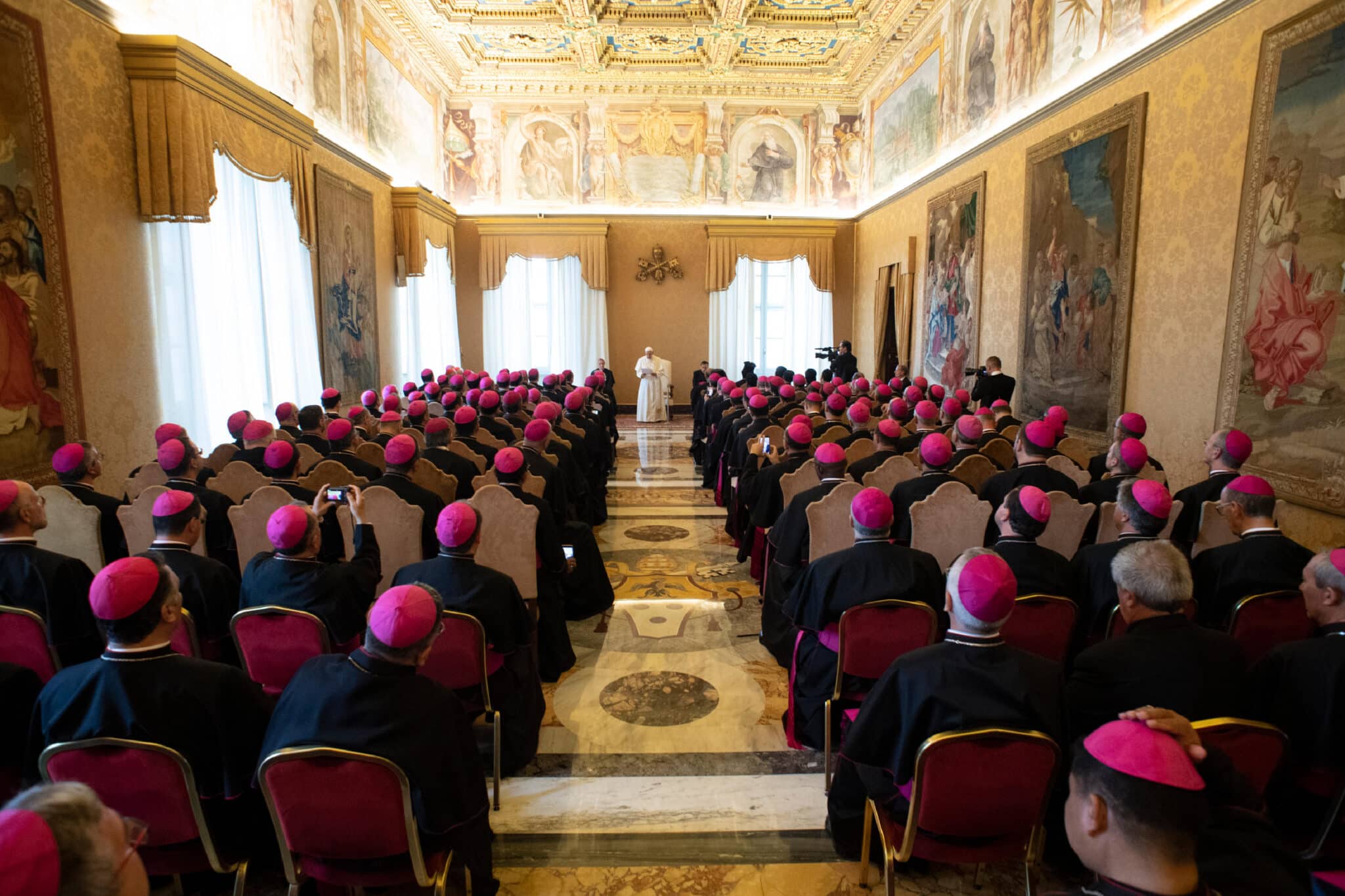Q. How are bishops appointed in the United States? Does this vary from other parts of the world? Are Roman Catholic bishops appointed the same way as Eastern Catholic bishops?
A. The 178 Latin-rite dioceses and archdioceses in the United States are grouped into 31 ecclesiastical provinces. In most cases these include a single state; a few include several states. Only California has two archdioceses (Los Angeles and San Francisco).
Periodically, the bishops in an ecclesiastical province meet to suggest names of priests who could be appointed bishop. They discuss the men proposed and pass their assessment on to the nuncio, the pope’s representative in Washington, D.C. The nuncio sends a questionnaire to people who know these priests well, asking for assessments in several categories.
When the head of a diocese requests an auxiliary bishop, he draws up a list of three names (not limited to priests already suggested), rates them and sends them to the nuncio.
When a bishop is needed to head a diocese, the nuncio consults with the bishops of the ecclesiastical province to which that diocese belongs, with the president of the U.S. Conference of Catholic Bishops (who has a three-year term) and with others as the nuncio wishes.
In time, he will send three names (and his evaluation of each) to the Congregation of Bishops in Rome. That congregation has bishop-members, appointed by the pope, who meet almost weekly—except during the summer. The members study the recommendations already made and submit their preferred candidate and two alternate candidates to the pope, who is free to ask the congregation to consider other candidates and propose other names. In the end, the pope makes the choice.
In countries under the jurisdiction of the Congregation for the Evangelization of Peoples, that congregation enters into the process. The same is true for areas under the jurisdiction of the Congregation for Eastern Churches. In a few cases, the Holy See’s Secretariat of State is involved.
The procedure followed in the United States is basically the same one followed in other parts of the world now. In a few European dioceses, the cathedral chapter (a group of priests from the diocese) has the right to propose three names as head of the diocese, but the final choice is still made by the pope.
In the 19th and 20th centuries, certain governments had concordats (treaties) with the Holy See, giving those governments a role in appointing bishops. In most cases, more recent concordats have cancelled that role. In some countries, the pope’s representative is called an apostolic delegate because the Holy See and that country do not have formal diplomatic relations. In that case, the apostolic delegate does the nuncio’s work described above.
In some Eastern Catholic Churches, a bishop is elected by its synod of bishops; the pope then expresses his approval by expressing “ecclesial communion” with the new bishop.


